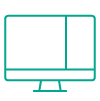6 Ways To Lower Customer Acquisition Cost
- Published
- 5 min reading

It's beneficial for a company to reduce the cost of acquiring new customers. If these costs are high while Customer Lifetime Value is low, so is the Return on Investment. Reducing the cost of customer acquisition can significantly increase the company's revenue. Finding the right balance is the key challenge. Here are some proven ways to lower CAC.
What is CAC and how does it differ from ROI and LTV?
Customer Acquisition Cost (CAC) refers to the processes and strategies a company uses to acquire new customers, from loyalty campaigns to various sales and marketing efforts. In contrast, Customer Lifetime Value (CLV) measures the total revenue a brand can expect to receive from a single customer over the life of their relationship. Return on Investment (ROI) measures the profitability of an investment by comparing the net profit generated to the initial cost of the investment.
While CAC focuses on bringing in new customers, CLV emphasizes the long-term revenue potential of those customers, and ROI evaluates the efficiency and effectiveness of the company's spending and overall financial performance. Each metric provides unique insights that help shape a comprehensive business strategy. Today, however, we are going to focus primarily on Customer Acquisition Cost and the steps you can take to keep it to a minimum.
How to calculate Customer Acquisition Cost (CAC)
By understanding what you spend on new customer acquisition, you can identify opportunities for cost savings and assess whether certain channels are being overspent. To calculate Customer Acquisition Cost, add up all your marketing expenses, expenditures on campaigns, social media activities, and advertising, and then divide the total by the number of customers acquired.
To calculate Customer Acquisition Cost, you can use the formula below:

Why is Customer Acquisition Cost crucial for your business?
Customer Acquisition Cost is a critical metric for companies because it directly affects the overall profitability and sustainability of the business. It measures the total cost of acquiring a new customer, including marketing, sales, and related expenses. Understanding CAC is essential for calculating the Return On Investment of marketing and sales efforts, allowing companies to allocate resources more effectively.
By keeping CAC in check, you can ensure that you customer acquisition strategies are cost-efficient and maximize the value derived from each customer. In addition, a low customer acquisition cost combined with a high Customer Lifetime Value (optimally, the CAC should be approximately 1/3 or 1/4 of the LTV) results in a healthier profit margin, ensuring long-term business growth. Monitoring and optimizing customer acquisition cost helps identify the most effective channels and tactics for acquiring new customers, driving sustainable expansion and competitive advantage.
Importance of ROI in Loyalty Programs
Customer Acquisition Cost, as we have already established, is strongly related to ROI – the overall financial performance of a loyalty program. First, setting up a loyalty program represents an investment in both human and financial terms. These investments include spending related to the construction of the project even before the program is launched. After the launch, the program naturally has to be kept active. The costs associated with loyalty operations in progress include the costs of the loyalty platform itself, support services, the loyalty points, physical rewards, communications, etc.
However, the benefits of a loyalty program include financial perks (higher order value, visit frequency and expenditure), advantages associated with retention (so called captive revenue) as well as operational benefits (increased effectiveness of advertising and brand promotion).
Based on the loyalty programs managed through its Loyalty Management Platform, Comarch estimates that the cash flow of loyalty is positive within three years. 93.1% of companies that measure the ROI of their loyalty program declare that they achieve a positive return on investment (source: e-Book: Loyalty Program ROI. How to Measure Customer Loyalty? that you can download from here).

Factors influencing CAC in Loyalty Programs
Several factors affect the Customer Acquisition Cost in loyalty programs. To optimize marketing spend on acquiring new members, you should consider the following:
Overall program complexity and desirability
Optimally designed, simple and rewarding programs tend to attract more participants, but may require a higher initial investment.
Marketing channels and strategies
Choices between digital campaigns, social media promotions, and influencer partnerships can vary widely in cost effectiveness.
Demographics and preferences
Understanding your target audience influences the amount spent to effectively reach and convert potential loyalty program members.
Current competition
In highly competitive industry, you may need to invest more to differentiate your loyalty offer and attract customers from other market players.
Brand maturity
If your brand is still relatively new, you will have to allocate a larger proportion of your budget to demand generation than companies with high brand awareness.
Overall customer experience
Ease of enrollment and perceived value of rewards also play a significant role in the effectiveness of acquiring and retaining loyal customers.
How to lower Customer Acquisition Cost – best practices
1. Focus on the right audience
It is important to focus on the right audiences when using marketing strategies and resources effectively. Identify those who are interested in your products and services and engage with them in a more effective manner.
Today's digital consumers expect unique, personalized or even hyper-personalized content and interactions. To meet these expectations, you should define your ideal customers beforehand, using tactics like buyer personas to clearly target and attract new customers.
2. Retarget customers
Retargeting is an effective strategy for maintaining visibility with potential customers who have left incomplete actions on websites and apps. It is not uncommon for customers to abandon purchases for various reasons. A gentle reminder can encourage them to finalize.
By retargeting, you can persuade these customers to reconsider their offerings, leveraging their initial interest. To implement it successfully and reduce Customer Acquisition Cost, you need to gather extensive data on customer behaviors, preferences, and motivations. This information enables the creation of highly targeted activities.
3. Focus on customer retention
Repeat customers spend 67% more in their third year with a company. It is more cost-effective to retain existing customers than to attract new ones. By increasing repeat purchases and average order values, you can reduce the costs associated with customer acquisition.
It is advisable to implement strategies such as customer feedback loops, loyalty programs, and customer education, and to monitor churn rates. Improving customer retention and reducing churn has a significant impact on revenue and acquisition costs.
4. A/B tests
As a marketer, you need to A/B test different elements of your landing pages to improve user experience and customer satisfaction, which can ultimately increase sales. Testing components such as product titles, forms, buttons, and layouts helps determine what customers prefer.
By experimenting with small changes, you can see how these adjustments affect click-through rates. It's important to avoid major overhauls that could negatively impact the UX, because major changes are able to upset users. Successful A/B testing leads to more task completions and higher conversion rates, contributing to better overall performance.
5. Leverage the power of marketing automation
Reduce customer acquisition costs by using marketing automation software alongside customer relationship management (CRM) tools. Automation reduces costs by minimizing the need to perform repetitive tasks – it frees up your resources and drives growth simultaneously.
You can easily capture contact information for future targeted marketing, such as offering gated content on relevant topics. This approach increases conversion rates and lowers acquisition costs by efficiently allocating resources.
6. Develop a well-designed loyalty program
Loyalty programs, as a strategic solution, are a great method for enhancing CLV, reducing CAC and – ultimately – boosting ROI. With this in mind, you can incentivize non-transactional engagement by offering discounts to customers who complete surveys, take quizzes, or share content on social media.
It is also important to clearly communicate the benefits of joining. Make sure the benefits of your loyalty program are easy to understand to avoid cognitive overload. What's more, you can increase retention by offering tiered benefits and personalized rewards.
Summary – your turn to achieve good Customer Acquisition Cost
In a nutshell, to reduce customer acquisition cost, focus on the right audience by identifying and engaging with those interested in your products through personalized content. Retargeting can help maintain visibility with potential customers who have not completed actions on your site. Make customer retention a priority, as repeat customers are more profitable and less expensive to retain.
Use A/B testing to refine your site elements. Leverage marketing automation to streamline repetitive tasks, and capture valuable contact information for targeted campaigns. Finally, develop a clear rewards system to increase CLV and loyalty program ROI.
And if you’re wondering how to determine whether your loyalty program is worth the effort, you can discover the methods for evaluating customer loyalty in our insightful e-book – Loyalty Program ROI: How to Measure Customer Loyalty. Interested? Get full access here.





